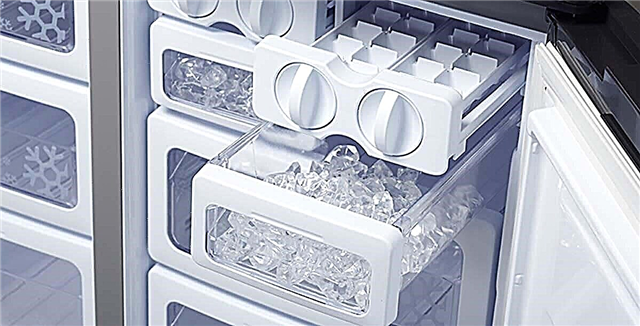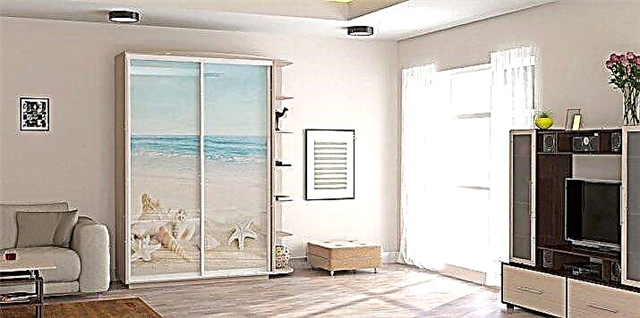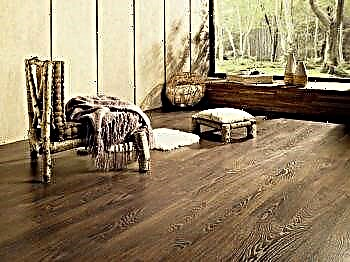
Most people dream of setting up a bath with a good steam room in their personal plot. At the same time, not everyone has the opportunity to purchase a turnkey solution, and often the construction of a steam room is carried out independently.
In fact - this is a simple construction that anyone can build, the main thing is to decide on the materials, since not all are suitable for use in such difficult conditions. The materials of the interior decoration experience a particularly strong negative impact, so the question of the lining for the steam room, which is better, remains constantly relevant.
The choice of material by type of tree
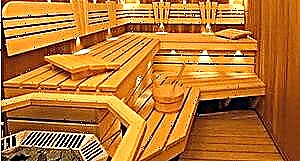
Modern lining produce almost any type of wood, but not all of them are suitable for use in the bath. More precisely, the bathhouse consists of several rooms, where the climatic conditions are completely different, respectively, and the impact on the facing material is also different.
Softwood paneling

So, for rest room recommend taking softwood lining, which does not tolerate temperature differences in the steam room, but gives out a pleasant aroma of needles, improves the air and has a beneficial effect on the whole body as a whole. If, however, the steam room is supposed to be sheathed with coniferous lining, then before using it it is necessary to thoroughly melt it several times, and then inspect the walls. Most likely, there will be smudges of resin on them, they must be removed. This will significantly reduce the heavy antiseptic odor that conifers produce during heating.

In addition to the smell, which some may consider dignity, lining from a number of conifers, over time can change its color all the way to dirty blue. She does not change her physical properties, but her attractive appearance is lost forever.
The use of softwood lining, first of all, due to its low cost. Unfortunately, the lining of spruce and pine has a loose structure that is not able to withstand moisture, however, like products from solid birch, they are also not recommended for use in the bathhouse.

Material from oak, larch, alder

All these tree species ideal for interior decoration of the steam room and the entire bath. They have a beautiful aesthetic appearance, changing their shade from light beige to cognac, depending on the type of wood and the region where it was grown. Sheathe the steam room with an oak or alder lining - this means getting a durable coating that is not afraid of moisture and temperature changes, due to the high density of the fibers.
Premium Lining

Cedar lining, as well as aspen lining, is considered the best. Besides her gorgeous appearance, she for a long time exudes a fragrance that has a healing effect and is especially useful for people suffering from diseases of the upper respiratory tract. Cedar wood, despite its resistance to various negative factors, including high humidity, remains plastic and does not crack under the influence of high temperatures.
What kind of lining for a bath to choose
Finishing the interior of the bathhouse is the final stage of construction. It is very important and requires accuracy and thoughtfulness in the use of finishing materials.
In modern saunas, the lining of wood is most often used for interior decoration. And this is justified, since it has a number of advantages over other finishing materials, it can withstand moisture, high temperature, easy to install and relatively inexpensive.
What are the advantages of a lining made of wood and why they choose it for a bath:
- natural, eco-friendly material,
- easy installation
- low cost
- a large selection of wood,
- different types in design and grade,
- beautiful appearance
- high thermal insulation properties.
According to the profile, the material is:
- narrow boards for vertical installation,
- wide boards with a cut for vertical or horizontal installation.
The shape of the lining that is used for the bath:
- seamless,
- with imitation of a bar,
- block house,
- Eurolining,
- with imitation of a log.

Types of surfaces of eurolining recommended for bath decoration:
- standard form of eurolining,
- Soft-line
- "calm",
- form with a longitudinal facet, "thorn groove",
- form with a thorn groove.
Types of material by grades (GOST), for the inner lining of the bath are classified from premium to class C - the third grade.
Lining for the bath: linden
Lining from linden is often used for the inner lining of the bath. This finishing material has a beautiful white tint and a special texture. But such cladding panels require additional treatment with antiseptic agents, otherwise the wooden lining will soon darken and begin to rot.
Processing with protective agents is best done on all sides before mounting to the surface. This will protect the tree from moisture in the joints, significantly extend its life and preserve the beauty of the room.
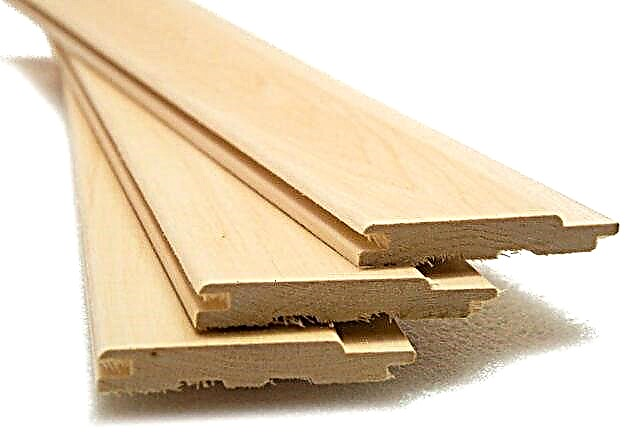
Lining aspen for a bath
In terms of quality characteristics, this wood is similar to linden. Aspen has a dense structure and increased hardness, which provides lining of aspen longevity and original beauty.
The aspen panel tolerates a humid environment well, moreover, with increased humidity it only becomes stronger. Such material is suitable for washing or showering. But aspen lining is quite expensive, so its use may be limited to targeted use in a particularly humid environment.

Alder
Alder wood is highly resistant to high temperature, moisture, water and steam, which means it can be used in a steam room. Alder panels have low heat conductivity, keep heat well in the bathhouse and do not overheat.
Alder lining has a pleasant pinkish color, from light to dark tones. Sheathing panels are even, without knots, with a beautiful velvety surface. Such material can be used in all rooms of the bathhouse and enjoy coziness and warmth for many years.

Lining from cedar has a beautiful appearance and texture of the slice. She has natural antiseptics and fights for a healthy microclimate in the bath. Cedar belongs to coniferous species of wood and when heated emits a pleasant aroma of the forest.

Cedar wood has a low density structure and lends itself well to processing. She can sheathe a dressing room, dressing room or lounge. But it is not recommended to sheathe a steam room with it. This is due to the fact that when heated, the tree begins to “cry” and tar drops stand out on the surface. If you do not do additional surface treatment, then these drops will darken over time and spoil the whole look of the steam room.
Larch
Larch cladding has good quality indicators. Larch wood is durable and almost inferior to oak. It is easy to process and has a high specific gravity. Larch lining has a very attractive appearance, and the unique slice texture allows you to create a beautiful, “warm” interior in the bathhouse.

Larch lining can sheathe all the rooms of the bath, without exception. It is durable and retains its original appearance for many years. Due to the low heat capacity, the steam room quickly warms up, and the walls do not burn, since they do not heat up much. Wood has natural antioxidants, and this is another plus when choosing a finishing material for a bath.
Which lining is better for a sauna
The most popular material for finishing saunas is a wooden lining. It makes the sauna room attractive, warm and comfortable. This material has all the necessary properties that are important in an environment of high humidity and high temperature.
Sauna lovers prefer a natural, environmentally friendly material. For lining the sauna, you can use a lining made of completely different wood - it depends only on the individual preferences of the owner and his financial capabilities.
What kind of lining to use for a wood-fired bath
As in the sauna, the inner lining of the bathhouse on firewood is most often made from natural wood panels. Plastic materials in a Russian sauna with a heater are also unacceptable, and a black sauna does not require wall cladding at all, but it does not exclude it at all.

Unlike a sauna, a wood-fired bath has a relatively low steam heating temperature, but has high humidity. The human body, well perceives the temperature in the steam room is not higher than 60 degrees, with air humidity 40-50%. This mode is optimal.
Based on this, the choice of cladding for a steam room in a wood bath should be designed specifically for such an environment and for a very long time. The main criterion in the selection of lining for the bath is the wood from which it is made and the quality of its processing.
In a wood-fired bathhouse, you can use a lining made of wood:
- alders
- linden trees
- aspens
- ash tree
- larch trees
- birch trees
- oak
- ate (except steam room),
- pine trees (except steam room),
- cedar (except steam).
What is the best lining for the steam room
When choosing a lining for cladding a steam room, one should remember in the bath that the temperature inside the room can reach 100 degrees or more. Therefore, of all types of wood, only one that tolerates high temperature and humidity should be noted.
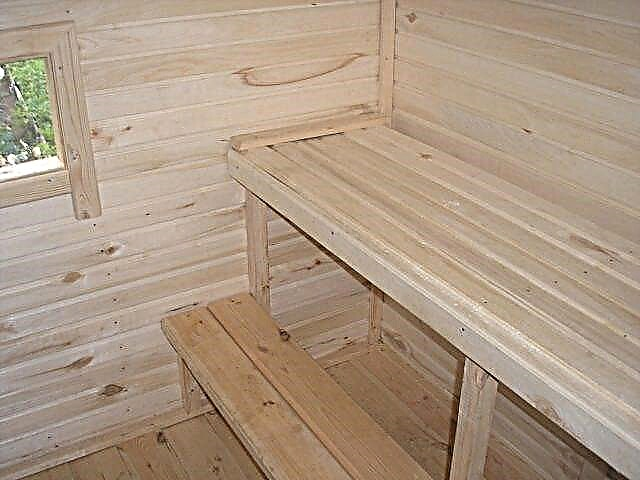
The most suitable lining for the steam room:
- Aspen - has good resistance to temperature extremes, exposure to high humidity and steam, as well as a combination of all these conditions at the same time.
- Linden lining for the bath is the best solution to the problem of the inner lining of the room in the steam room, dressing room and locker room. Linden has all the necessary properties for high temperature and humid environments.
- Maple - suitable for all rooms of the bath, including steam rooms. Maple has a low thermal conductivity and well retains useful heat.
- Alder - well withstands even too high a temperature, therefore it is universal and can be used for all rooms of the bathhouse and steam room.
- Lining from larch - ideal for a steam room. Compared to other species, it is more expensive, but has all the necessary properties.
The choice of lining for the dressing room
The dressing room is often a relaxation room and a locker room.

This part of the bath is not exposed to high temperature, humidity or evaporation. Therefore, almost any lining can be used for the dressing room. The main argument for choosing a finishing material is appearance and durability.
Steam room lovers willingly use material from coniferous trees - fir, pine, spruce or cedar for interior decoration. This wood creates a unique atmosphere in the resting place, exuding the aroma of pine needles.
Choosing a shower lining
The shower room in the bathhouse is the wettest room, which requires a special type of decoration. Sometimes the shower in the bathhouse is decorated with ceramic tiles - floor and drain for water, sections of the wall and ceiling. But the shower room can also be trimmed with lining. Coniferous wood panels are used for this purpose, as they are not afraid of direct contact with water. Spruce, pine or fir panels are suitable for decorating a shower room.
But in order to provide additional protection of wood from moisture and decay, the lining is covered with water-repellent compounds and impregnations. Special paints or protective waxes are suitable for this purpose. Treated wood will be protected from water and will last a long time.

Conclusion
Lining for a bath made of wood is an excellent solution for interior and exterior decoration. Beautiful, environmentally friendly, healthy and in keeping with the traditions of a real national bath. There is practically no alternative to lining, it will always be in demand in the decoration of baths and saunas for those who care about their health and beauty.
What to choose?
The concept of “lining” is quite extensive. It unites groups of products for typesetting cladding similar in shape, but differing in the type of raw material, docking units, sizes, and applications. Ready-to-install materials are produced in the form of boards (lamellas) having perimeter lock samples: sheet piles or quarters (folded). Of course, the "classic" lamella, historically used for car lining, was made of planed boards. Now similar products in form from polymer raw materials, MDF or even metal are also widely used.
Therefore, when the builder has a legitimate question - which lining is better to sheathe the bath from the inside, then, first of all, it is necessary to focus on the premises with the most extreme operating conditions - washing and steam room. And if there can still be options for washing - to cover the walls with plastic or wood, providing effective ventilation of the internal volumes of air, then there are no alternatives to cladding, only wood. Other materials under the influence of high temperatures, humidity changes will simply rapidly decompose, saturating the atmosphere with poisons. In addition, the types of lining for the bath based on lumber have unsurpassed aesthetic and tactile characteristics, emit a pleasant aroma with a therapeutic effect.

What kind of wooden lining for sheathing a bath?
High-quality typesetting of wooden lamellas is created on the basis of products regulated by Russian guests, as well as European standards. For example, GOST 7016-2013 sets the parameters of surface roughness, and State Standard 8242-88 “Profile details of wood and wood-based materials for construction. Technical conditions ”determines the humidity of products sold to the consumer. If the norm of 12% (± 3%) is observed, then in such a board after installation there will be no critical deformations leading to a violation of the integrity of the coating, its warping, loss of aesthetic properties. Lining for a bath with standard humidity also resists bacterial damage, of course, provided that the installation and care rules are observed.
Is the quality of the lining really important?
Visible wood defects, characterized in the GOST 2140-81 of the same name, affect not only the aesthetic perception of the facing of the room. The operational characteristics of the coating directly depend on them. For example, knots reduce workability, the strength of the workpieces, can generally fall out over time. In addition, they quickly overheat, threatening to cause burns when touched. Cracks in conditions of a significant temperature-humidity gradient generally behave unpredictably. Expanding, they are intensively saturated with moisture, which leads to increased degradation of the material.
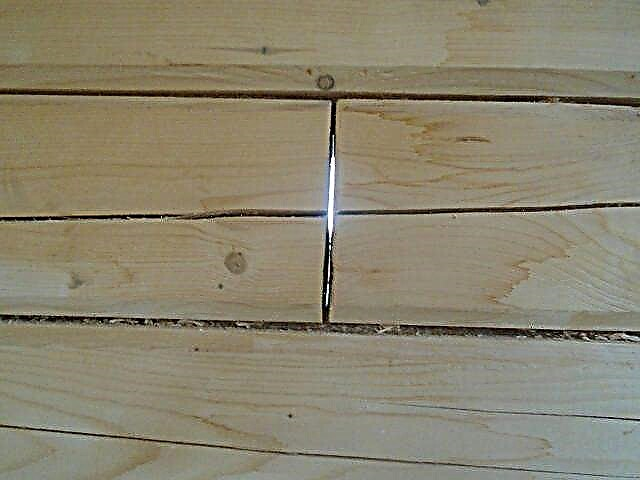
Obviously, the solution to the problem - which lining is better to sheathe the bathhouse, should begin with a selection of lamellas of good quality, which is determined by the type or class of wood. A similar gradation is determined: for hardwood according to GOST 2695-83, for conifers according to GOST 8486-86 and GOST 24454-80. Of course, the developer, trying to save money, cannot help but notice that, for example, the selected material will be 5 times more expensive than the 4th grade. However, in brief, the consequences of choosing products with an abundance of vices have already been said.
Lining for a bathhouse or other premises is produced by manufacturing companies with products of 4 grades that meet all the requirements developed for other lumber.So for the steam room, “Extra” products made from selected wood that have perfect geometry, without knots, cracks and other flaws are perfect. Class “A” (grade 1) with a small number of small knots and undeveloped cracks will also serve well. A compromise class “B” (grade 2), but it is better not to put a lining of class “C” (grade 3), although it is in fact cheaper than products of class “A”, about 2 times. Grade 3 is generally suitable for various ancillary facilities such as a drovnik or other utility compartments.

Lamella profile
If the shape of the front surface of individual slats for the most part carries an interior load, then the lock profile has a direct impact on the convenience of mounting cashing, as well as on the mechanical properties of the assembled coating, its resistance to environmental influences. That is why the rarely popular types of lining for the bath today are made of "classic" finishing boards with seam selection. Pairing the lamellas through the selected quarter no longer meets the needs of consumers. Under the influence of contrasting changes in temperature and humidity, it can diverge so much that through cracks are formed between the elements.
On the contrary, if we choose a lining for a bathhouse from grooved planks, then due to their tongue-and-groove connection, we obtain a lining resistant to mechanical and microclimatic influences. Now the tongue-and-groove assembly is in priority use, since it is less prone to warping, and its lamellas maintain the integrity of the coating regardless of the operating mode of the paired room.
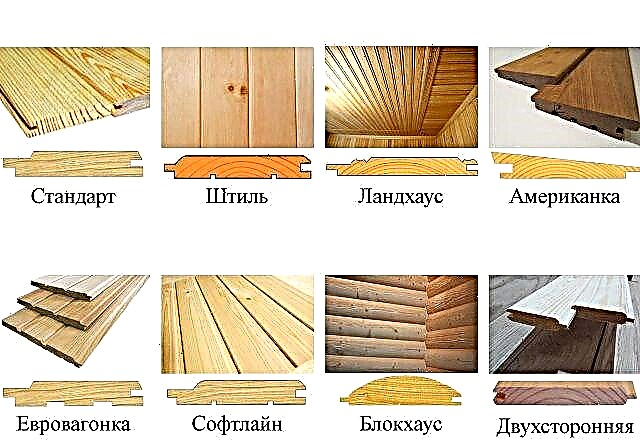
Depending on the shape of the section of the board, lumber manufacturers offer the following types of lining:
1. Standard
It became a continuation of the development of the production of lamellas with a quarter sample. The tongue-and-groove lock is small, and the crest is shorter than the depth of the groove, which does not always guarantee the continuity of the interface when strain stresses occur. This lining for the bath is most likely suitable for any of its rooms, except for the steam room or the washing one, since it does not have ventilation grooves on the back side.
3. Eurolining
Profile with improved performance. Due to the elongated spike of the lamellae, their pairing is resistant to warping. Therefore, such a lining for a steam room, sauna or sink will also serve perfectly in all other rooms. The coating is more textured (ribbed) than the Standard. In addition to the shape, the board must comply with the European standard DIN 68126, imposing strict requirements on the product geometry, surface roughness and quality of the original wood.
6. Blockhouse
Products simulating a log. It is successfully used both for external use, and for internal facing. For a steam room or a washboard, they are necessarily selected with ventilation grooves cut along the back side.

Which tree is best for a bath?
Often, developers, in order to save money, buy lumber from pine or spruce for facing the premises, as the cheapest. However, when deciding which lining is better to sheathe the bath from the inside, it is better to invest in hardwood products that are more suitable for these purposes. Of course, products from coniferous massifs saturate the air with volatile products and forest aromas, but at the same time, the board, especially when heated, emits tar, which, having fallen on things or the body, is unlikely to please anyone.

If you still decide to mount a coniferous lamella, then, given the high hygroscopicity of the spruce, choose a pine. It is optimal to place lumber from it on non-contact surfaces, but without using it on the ceiling. The option, when the lining in the bath is mounted with a solid pine coating, will require multiple heating with the cleaning of the room until the protruding resin is completely removed.
Among the coniferous raw materials stands cedar. Products from it belong to the elite, expensive, are characterized by a spectacular palette of colors, helping to shape the exquisite interior of the room. The value of the cedar is also that, when heated, tar does not protrude on it.
However, the most common bath linings are decorative boards made of linden, aspen or alder, as well as an oak plank. Well-dried hardwood is characterized by low heat capacity, which helps to reduce the time and energy consumption for the preparation of a paired microclimate. Its heated surfaces with a small number of knots will not burn when touched.
It is able to withstand temperature conditions up to 120 0 C in saunas and maximum humidity in Russian baths. Its wood is light with a brownish tint, although it darkens a little with time. It is updated with light sanding of surfaces, this rather soft material. Lining for a bath of linden is relatively inexpensive, and breathing in rooms decorated with it is easy thanks to the characteristic aroma components emitted by steamed wood.
Attention! It is possible to slow down the process of darkening of any wood if, immediately after installation of its elements, impregnate them with specialized protective compounds for baths. The use of conventional wood preservatives in doubles is not allowed. For supporters of 100% environmental friendliness it is generally better to refuse any impregnation, and once a couple of years to pass sandpaper on the open surfaces of the cladding.
Aspen
It also tolerates extreme microclimate. The wood is almost white with a silvery sheen, but eventually blackens without treatment. Like other types of lining for a bath, an aspen lamella is mounted quite simply, in this regard, no different from analogues. In this case, one should take into account its high hardness, which will declare itself during subsequent grinding. Wood is denser even more densely with time and is far worse processed than linden. Taking into account the strength of the aspen, as well as its resistance to decay, it is faced not only with walls and ceilings, but also with floors.

And yet, which wood is better?
Based on the advantages and disadvantages of each type of wood, a clear answer does not exist. Therefore, the optimal solution is obtained only when creating a thoughtful combination of elements. For professional decoration, the lining in the bath, for example, can be combined in the following compositions:
- ceiling - lining or solid linden board,
- walls - a combination of alder and cedar,
- floor - massive aspen board.
Sizes from the manufacturer
In the end, which lining is better to sheathe the bath, will have to be decided on the basis of objective factors, but purely individually. Nevertheless, any developer will strive to ensure that the selected material is sufficient for all sections of the cladding with maximum cost savings. Obviously, a competent preliminary calculation is indispensable. In order to execute it correctly, it is important to take into account the factor of standard sizes of finishing products, which affects the amount of cutting and waste, and, consequently, the amount of overpaid money for the lumber stock.

Today's market abundance offers consumers products with both guest and non-guest dimensions, as well as manufactured to European standards. The domestic standard GOST 8242-88 defines the production of lining parts from lamellas:
- from 2100 mm long,
- thickness - 13-19 mm,
- width - 45-120 mm.
Nevertheless, manufacturers, taking into account market demand, are guided by slightly different parameters of the facing board:
- length of lamellas - 200-6000 mm,
- thickness - 12-40 mm,
- width - 76-200 mm.

If we choose a lining for the bath, made according to European standards, then you should know that for it more clear overall parameters are indicated:
- length - 500-600 mm,
- thickness - 13, 16, 19 mm,
- width - 80, 100, 110, 120 mm.
Considering the dimensional characteristics of the premises to be equipped, as well as knowing the standard sizes of forcing available on the regional market, it can be selected in increments of multiple lengths and heights of the walls. In addition, if you use docking rails, you can already put short lamellas, which are noticeably cheaper than similar long ones.
Which lining is best for a bath - a review of materials for a bath, dressing room and shower
After the erection on the plot of the building under the bath, you need to decide on the option of interior decoration. And here a lot of questions arise. The interior design of the bath can be performed using various materials. Whether it is a well-known clapboard from various varieties of wood or more expensive material (for example, decoration or salt stone).

Of course, you should opt for lining. This natural and environmentally friendly material will be an excellent solution for the interior design of the bath. The attractive design of the bath will delight the eyes of not only true connoisseurs, but also ordinary lovers to take a steam bath in the bath. In order to understand which lining is better for a bath, it is necessary to familiarize yourself with the characteristics and classification of future cladding.
As a rule, any bathhouse consists of a dressing room, a steam room, and sometimes a shower room. For each of these rooms there are a number of safety and environmental requirements. Therefore, finishing materials should be distinguished by their functionality, appearance and technical characteristics. But the general rule is resistance to water, moisture and high temperatures.
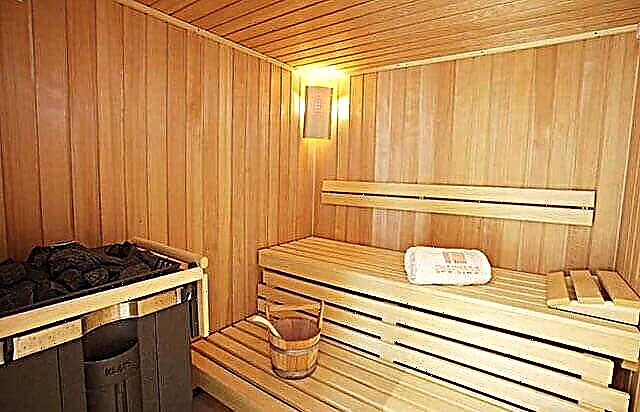
The interior decoration of the bath is an aesthetic component. But the main criterion for choosing one or another wooden coating is safety. When heated, the seats and walls should not leave burns on the human body. In addition, some types of wood (for example, conifers) emit characteristic resins that can be harmful to health. A prolonged stay in a room with such a finish can cause allergic reactions.
Lining options for a steam room
Clapboard cladding is a popular way of wall cladding in a bathhouse. The type of material used, the class and the processing method, determines the main criterion on how to choose a lining for the bath. You should also choose the appropriate material for the seats, shelves and additional decorative elements.
For installation work in the steam room, panels of hardwood (alder, aspen, beech, ash, etc.) are used. This material has a flat and smooth surface without any kind of damage. And beneficial substances released under the influence of high temperatures have a beneficial effect on human health.

Depending on the density of the structure and the outer surface, the lining is divided into classes. Classes "Extra" and "A" are of the highest quality (smooth surface without damage and deformation). Classes "B" and "C" are somewhat lower in quality due to the presence of visible surface imperfections (knots, cracks). Euro lining is classified as a separate subspecies. Due to a different method of processing wood, it is distinguished by the large size of the tongue-groove joint and the ability to remove excess moisture through special grooves.
The choice of lining for the steam room
The walls and ceiling of this room are lined with the highest quality lining. It perfectly withstands high temperatures, high humidity, as well as constant exposure to water and steam.
Knowing the technical characteristics of different types of trees, you can easily decide which lining to choose for a steam room. Of course, the best option is a panel made of deciduous tree varieties, because coniferous species under the influence of high temperatures will emit toxic resins.
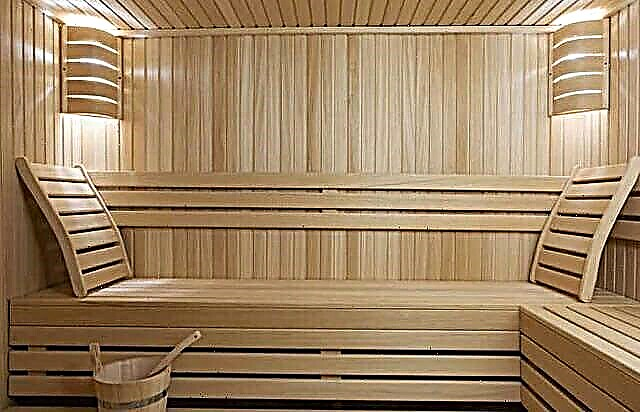
The manufacture of lining from various tree species determined its characteristics and properties. Knowing all the advantages of wood material, answering the question which lining is better in the steam room will not be difficult.
A wonderful material that is durable and wear resistant. High resistance to water prevents the appearance of small cracks and deformations during drying.
Linden panels have high thermal conductivity. Lining linden for a bath is able to evenly quickly distribute heat in the steam room, at the same time, reducing the cooling time of the walls. Low heat capacity will not allow to leave burns on the human body in case of accidental contact with the surface.
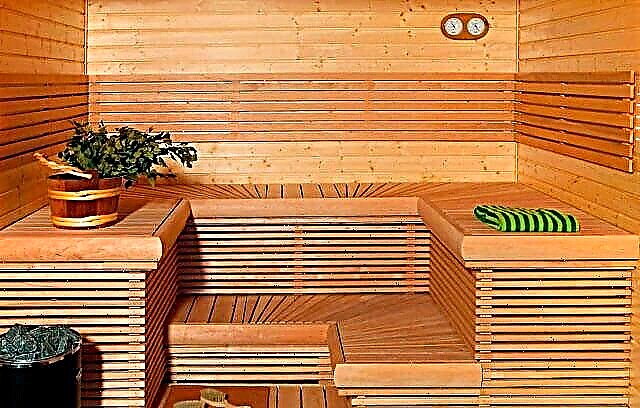
Even at its low cost, the material has a dense structure and excellent characteristics. The pleasant aroma of wood is known for its relaxing and soothing effect on the human body. Linden wall paneling will be an excellent option for the interior design of the steam room.
Like linden, aspen wall paneling has several advantages. First of all, this material has a low traumatic ability (does not leave burns on the body), and also does not deteriorate after drying.
The great demand for aspen lining contributed to the development and creation of a huge assortment of different shapes and sizes of finished panels (read: "Which aspen for a bath is best - planning a log house"). What is better for a steam room linden or aspen - a strictly individual question. Before buying, you must carefully check the surface for damage, chips and the presence of small knots. Quality material determines the durability and visual appeal of the finished coating.
Lining alder for a bath is to the taste of more authoritarian lovers of bath relaxation. This material is slightly more expensive than the previous ones and is of higher quality. The perfectly smooth surface has no defects, therefore, after installation it does not require additional processing by a grinder.
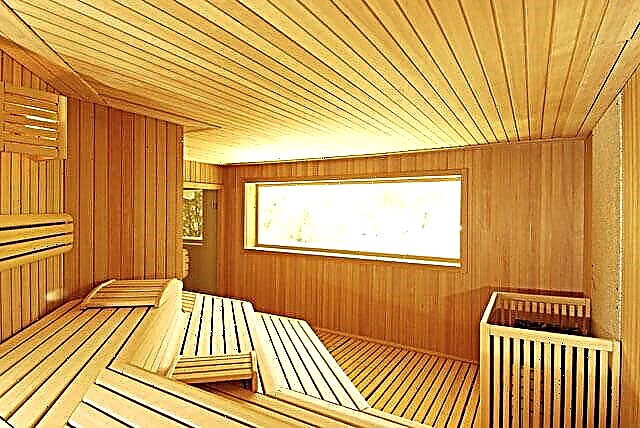
Various options for performance, technical characteristics of the material and the choice of colors directly depends on financial solvency and individual wishes. Alder for the bath - a great choice in favor of sophistication and functionality.
Panels from this material are used for decoration in more expensive and elite establishments. This material was especially popular due to its extraordinary beauty and special healing properties. Cedar wood does not require a special approach in the manufacture, processing and installation process.

Essential oils secreted by wood have a beneficial effect on the human respiratory system (read also: “Essential oils for a bath - use, origin, rules of use”). Therefore, the lining of cedar for the bath is used not only for decoration, but also for therapeutic prevention. Of course, with time it becomes more difficult to catch a pleasant woody aroma, but the delightful appearance of the cedar finish remains for a long time.
Rare breeds
Lining "Extra" class has a high cost due to the quality of the wood used. Excellent technical characteristics, durability and beauty of materials distinguish it from other, cheaper options.
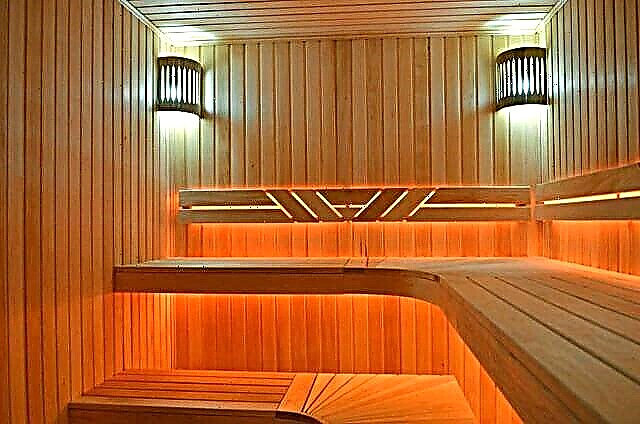
The most refined material is oak. The heavy panels installed from this material have a beautiful texture. The durability of the material is also not necessary.
The use of the African tree of Abashi is not very popular. Its unique property is the ability of wood not to heat when exposed to high temperatures. Due to this, this material is often used in the manufacture of shelves in the steam room. Wall and ceiling finishes are not ruled out.
High quality panels are distinguished from the pine family wood - Hemlock, brought from North America. The material is characterized by high strength and durability.
Which lining for a bath is better: a comparative review, features and reviews

Never do this in church! If you are not sure about whether you are behaving properly in the church or not, then you are probably not doing the right thing. Here is a list of horrible ones.

Charlie Gard died a week before his first birthday. Charlie Gard, the terminally ill baby that the whole world is talking about, died on July 28, a week before his first birthday.

15 symptoms of cancer that women most often ignore Many signs of cancer are similar to symptoms of other diseases or conditions, so they are often ignored. Pay attention to your body. If you notice.

7 parts of the body that should not be touched Think of your body as a temple: you can use it, but there are some sacred places that cannot be touched. Research showing.

Contrary to all stereotypes: a girl with a rare genetic disorder conquers the world of fashion. This girl is called Melanie Gaidos, and she burst into the world of fashion rapidly, shocking, inspiring and destroying silly stereotypes.

Top 10 bankrupt stars It turns out that sometimes even the loudest fame ends in failure, as is the case with these celebrities.
We choose a lining for the sheathing of the steam room
The traditional material for building a bath or sauna is wood. And the interior of the steam room is difficult to imagine without a natural wooden lining. It creates a special microclimate, retains heat, has an attractive appearance. The main advantages of lining made of natural wood are durability and environmental friendliness. The question remains: which wood is more suitable for the steam room.

The wood paneling in the steam room looks beautiful and has excellent performance
Hardwood Material Overview
The deciduous species, of which the lining is most often produced, include alder, linden and aspen. All these breeds have been used for wall cladding in bathhouses since ancient times. Their advantages are that they do not emit tar, are resistant to moisture and do not heat up under the influence of high temperature. But when choosing a lining, you need to pay attention to the quality of the material. It is important that there are no chips or knots on the surface of the panel.
- Alder is an excellent option for finishing material for a sauna or bath. It has a pleasant light pink color, is characterized by high strength, heat resistance and moisture resistance. It would seem that the best material for the steam room, but only not everyone can afford its cost.
- Lining from linden wood has the unique properties necessary for a steam room. Firstly, from high humidity the panels do not crack and do not darken. Secondly, the linden heats up for a long time, so the possibility of getting a burn from touching it with the skin is minimized. They have a pleasant golden color and a sweet aroma - the best characteristics for a bath.
Some use birch lining for the interior decoration of baths, but it quickly rots, is exposed to the negative effects of moisture and high temperature. Its use is permissible, but only in rest rooms or a waiting room.
Overview of material from conifers
Coniferous wood has a relatively low cost, it is easy to process. Negative quality - resin is released under the influence of high temperature, it negatively affects human health. However, a lining made of coniferous wood is also used for the internal cladding of the steam room walls.
Pine material is often used to decorate the ceiling, although wall sheathing is allowed if the steam room uses an electric furnace - it heats up less.
Lining of cedar is of high cost, has an original wood texture. It emits fewer resins during heating, so with its help you can create a unique design inside the steam room.

Cedar lining looks aesthetically pleasing in any room, including a bath
Among the best options for lining for the decoration of the steam room is the African Abashi tree. Its unique natural properties are best suited for baths and saunas, this tree does not heat up, and it is impossible to get burned in contact with it. It has a pleasant light beige or light yellow color, which the heating field transforms into chocolate.
Material grade
The quality of the interior decoration largely depends not only on the type of wood, but also on the class of finishing material. The quality of the lining is determined by four grades:
- Extra-class - these are the highest quality panels. On their surface there are no knots, chips or any defects, the wood texture is homogeneous. The cost of such a lining is quite high, but it is the best option for steam rooms and baths.
- Class A is slightly cheaper, but also has high quality indicators.
- Class B. There may be knots on the surface of the panels. Wall decoration in the steam room with such a lining is permissible, but the service life will be slightly less.
- Class C. This is a low-quality material, it should not be used for wall cladding in the steam room.
Many people choose building material based on financial capabilities, but one should take into account not only the cost of the material, but also its strength, resistance to high temperatures and humidity. Therefore, for a steam room it is better to choose a premium or A-class material, although others will do.

Lining in the steam room can be used grades B or C
Whatever the lining is chosen in the end, the secret to its long-term use is proper handling and regular care. An important factor affecting the operating life is the correct installation.
Lining the steam room
Lining selection by profile type

The profile of the lining, at first glance, is not the most important aspect, since for the interior decoration, the integrity of the coating is not so important. This is partly true, but profile in this matter is needed not only for assembly. The best lining is equipped with additional ventilation ducts, on the back side. They are necessary for cooling the wood, as well as for the removal of condensate, which accumulates between the finishing material and the main wall of the room. This aspect is very important, as it directly affects the operational life of the material.
In addition, such grooves able to relieve internal stress of wood, which is formed by temperature changes. If used, for finishing a cedar lining, which preserves the plasticity of the material, then the stress points are not terrible, since they are compensated independently, but many tree species from stress begin to collapse and crack.
The type of front side, which can be solid, profiled or rounded, does not have any differences in terms of resistance to aggressive factors. As a rule, the appearance is determined only by the style in which the bathhouse is built, and of the personal preferences of the future owner.
What to look for when choosing a material

High-quality finish steam rooms clapboard directly depends on the choice of good material. When choosing, you should pay attention to the following points:

According to standards, lining divided into several groupswhich are marked with letters. "A", premium class, for the manufacture of which is only selected wood. Class "B" is also used if it is necessary to sheathe a steam room. In this class, small knots are allowed on an array of wood, and the woody pattern is more pronounced than in the previous class. The cheapest class “C” allows not only the presence of knots and other natural components, but also the heterogeneity of the structure.

Clapboard Care

Before the construction stage, it is necessary to decide which lining is better to sheathe the bath, but work on this material does not end there. Although lining impregnated with some protective compounds even during drying, in the bath, where constant humidity and temperature changes.
Given that when heated, ordinary wood varnish exudes fumes with an unpleasant odor that can have a negative effect on the human body, it is not recommended to be used. There are other solutions to this problem, such as cedar lining, high temperature resistant specialized acrylic varnish.

Available in Russia Aqualakwhose main components are wax and water. Also, when deciding how to cover the lining in the steam room, you can safely give your preference Pyrolex and Nortex, complex means capable of not only protecting wood, but also partially restoring or cleansing areas affected by fungal diseases.

The choice of which to clad the lining of the bath from the inside, in general depends on the financial viability of the customer. On the other hand, it is not worth saving at the finishing stage, since not only the appearance of the premises, but also the microclimate that will be in them depends on this. Incorrectly selected lining can spoil that certain atmosphere, which is achieved only in the bathhouse and, accordingly, spoil the whole impression of visiting it.

